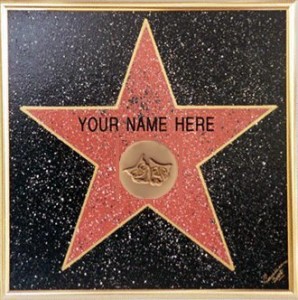 Print this Article
Print this Article

Recognizing a donor with a dedication | By: Rabbi Yosef Fund
Recipient Remorse
Today’s synagogues, Yeshivot and various Tzeddaka organizations rely mostly on the generosity of their donors, many of whom serve as role models of responsibility and charitable giving. However, accepting a mega-donation is not without its potential risk.
From time to time, a Tzeddaka organization no longer wishes to carry the name of the original donor as a result of the latter’s inappropriate behavior or bad reputation. At times, the donor will themselves make certain demands of the organization which may not fit its agenda or may be very difficult to fill.
One such example has recently been covered in national news. In 2006, the famous businessman and 2016 presidential hopeful, Donald Trump, donated the Donald J. Trump State Park to the State of New York. Mr. Trump purchased the 436-acre property in Westchester County and Putnam County in the 1990’s, with the intention of creating a golf course. After Mr. Trump was unable to gain town approvals to develop the private golf course, he decided to donate the land for use as a state park, claiming it as a $100 million tax write off. The deal stipulated that the property will bear Trump’s name, in acknowledgment of the donation.
Following Mr. Trump’s controversial comments in his presidential campaign, New York State Senators have tried using the legal venues at their disposal to strip the park of Mr. Trump’s name. Trump’s response has been that NY State is welcome to return the land to his ownership.
How this battle will play out in the legal arena, remains to be seen. In this article we will discuss the perspective of Halacha: what is the Torah view on putting donor names on dedications? Can one give a donation to Tzeddaka, with conditions attached? Does the Tzeddaka institution ever have the right to remove a donor’s name?
The Origins of Naming
It is well established in Halacha that a donor of a synagogue building or the like, may affix their name to it. The principal source for this ruling is the Shu”t HaRashba[1], who justifies this practice as being commonly accepted, implicitly endorsed by those Sages who adopt it themselves, and as being inherently reasonable. Furthermore, the Rashba writes that the Torah itself publicizes those who perform righteous acts, for example Re’uven[2] for attempting to save Yosef and Bo’az[3] for supporting Rut and Na’omi. We must then follow in the Torah’s lead.
The Netziv[4] offers a source for this practice in the verse in Zecharia[5]: “And the crowns shall be for Helem, Tovia, Yida’ya, and for Hen son of Zefania for a remembrance in the sanctuary of Hashem.” The Radak[6] quotes a commentary that explains this to mean that these individuals’ names were inscribed on their donations to commemorate that their generosity. Similarly, we find in the Talmud Yerushalmi[7] mentions of lamps and candelabras donated to synagogues with the names of the owner chiseled on them. There is much evidence that this was a common practice in Talmudic times[8]. Obviously, this very much the practice today as well.
Good Publicity?
The Divre Malkiel[9] writes that when one establishes an ongoing Mitzvah on his name, it is as if he continues performing it even beyond his lifetime, especially if his generosity serves to set an example for other to imitate.
The Teshuvot VeHanagot[10] adds that affixing one’s name to a donation is a way to set an example for their children to follow, and for a congregation to express gratitude towards a donor. Interestingly, Rav Ezriel Hildesheimer[11] (Germany, 19th century) in his responsa discusses whether or not it is appropriate to publicize donations in a newspaper.
Naming Rights
The Emunat Shemuel[12] limits the ruling of the Rashba to the actual donor; the one who raises the money would not be entitled to affix his name[13]. The first Shu”t Tzemah Tzeddek ruled, that a congregation may refuse a gift should they believe that the donor is insisting on affixing his name as a way of maintaining control[14]. There is much discussion in the Poskim as to when the personal behavior or lifestyle of the donor precludes him affixing his name.[15]
This remains true as long as the purpose for which the donation was given remains relevant[16]. There is much discussion in Poskim as what to do when a donor’s name is fixed to a structure which requires significant repairs.[17]
In the case of Trump State Park, the recipients are apparently disturbed by the notoriety which has come to surround the reputation of the donor. There seems to be no Halachic argument which would permit the removal of the donor’s name on this basis.
[1] ח”א סי’ תקפא, הובא ברמ”א יו”ד סי’ רמט סי”ג
[2] בראשית לז, כא
[3] רות, ב, יד
[4] העמק שאלה ג, ד
[5] ו, יד
[6] שם
[7] מגילה פ”ג ה”ב
[8] עלי תמר על הירושלמי שם
[9] ח”א בהקדמה
[10] ח”ד סי’ תפא
[11] יו”ד סי’ ריט
[12] סי’ לה, הובא בפת”ש יו”ד סי’ רמט סק”ג
[13] וע’ שו”ת משנת יוסף ח”ד סי’ כו אות ה
[14] שו”ת צ”צ הקדמון סי’ נ
[15] שו”ת מהר”ם שיק יו”ד סי’ פא וסי’ רלא, שו”ת בצל החכמה ח”ג סי’ מא
[16] שו”ת משנת יוסף ח”ד סי’ כה
[17] שו”ת שבט הלוי ח”ט סי’ רה, שו”ת קנה בשם ח”ד סי’ פג